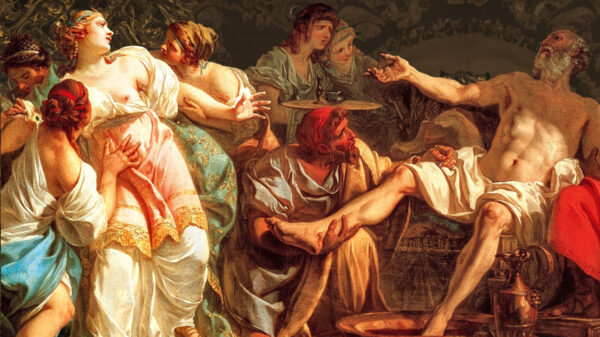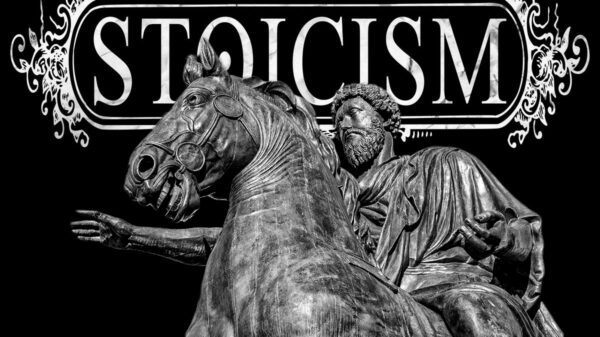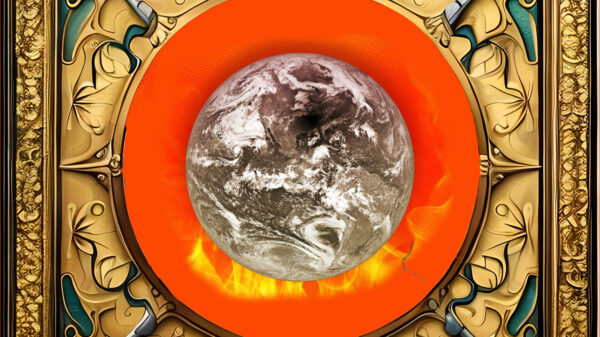In Hindu mythology, the concept of time is cyclical and divided into four distinct epochs known as Yugas. Each Yuga represents a specific era characterized by different moral and ethical qualities, societal norms, and spiritual development. The four Yugas are as follows:
Satya Yuga (or Krita Yuga):
Satya Yuga is considered the golden age and the most virtuous of the four Yugas. It is an era of truth, righteousness, and spiritual enlightenment. During this Yuga, people are inherently honest, compassionate, and spiritually advanced. The average lifespan of humans is significantly longer compared to the other Yugas. Virtue and dharma (righteousness) are prevalent, and society lives in harmony with nature and the divine.
Treta Yuga:
Treta Yuga is the second epoch and is characterized by a decline in righteousness compared to the Satya Yuga. Although virtue and dharma still hold prominence, they start to diminish gradually. In this Yuga, sacrifices and rituals become more elaborate as people begin to lose their inherent spiritual purity. The average lifespan of humans is reduced compared to the previous Yuga.
Dvapara Yuga:
Dvapara Yuga is the third epoch and represents a further decline in moral and spiritual values. During this era, righteousness and virtue continue to diminish, and people become more materialistic and self-centered. Rituals and ceremonies become more complex, and spiritual knowledge becomes less accessible to the masses. The average lifespan of humans continues to decrease.
Kali Yuga:
Kali Yuga is the current epoch and is known as the age of darkness and ignorance. It is the most degraded and challenging Yuga, characterized by widespread moral decay, dishonesty, and spiritual ignorance. In Kali Yuga, people are driven by selfish desires and pursue material gains at the expense of spiritual growth. The scriptures predict a continuous decline of righteousness throughout this Yuga, leading to a culmination of ignorance and suffering. The average lifespan of humans is at its shortest in this epoch.
According to Hindu cosmology, these four Yugas form a repeating cycle known as the “Yuga Cycle,” and they collectively span a period of 4,320,000 years.
After the completion of Kali Yuga, the cycle renews itself with the dawning of Satya Yuga, signifying the beginning of a new era of spiritual growth and righteousness. The concept of the Yugas serves as a philosophical reminder of the impermanence of time and the cyclical nature of human civilization.
Kali Yuga is considered the last and most degraded Yuga in the Hindu Yuga Cycle. It is believed to be an age of darkness, ignorance, and moral decline. The name “Kali” is derived from the Hindu goddess Kali, who symbolizes destruction and the end of negative forces.
The Kali Yuga is often associated with a decline in dharma (righteousness) and a rise in adharma (unrighteousness).
Characteristics of Kali Yuga
- Moral and Spiritual Decline: Kali Yuga is marked by a general decline in moral and spiritual values. People become more materialistic and driven by selfish desires, neglecting higher spiritual pursuits.
- Rampant Disregard for Truth: Truthfulness becomes rare, and dishonesty and deceit prevail in various aspects of life.
- Conflict and Discord: Society is marred by conflicts, divisions, and lack of unity. Social harmony and cooperation become increasingly difficult to achieve.
- Spiritual Ignorance: Spiritual knowledge and wisdom become scarce, making it challenging for individuals to attain spiritual growth and understanding.
- Shortened Lifespan: The average lifespan of humans is significantly reduced compared to the previous Yugas, contributing to a sense of impermanence and transience.
- Environmental Degradation: The natural world also suffers during Kali Yuga, with a decline in the quality of the environment and ecological imbalances.
Correspondence to the Current Era
According to Hindu tradition, Kali Yuga began following the conclusion of the Dvapara Yuga, around the time of Lord Krishna’s departure from the Earth. The exact timeline for the beginning of Kali Yuga is a matter of interpretation and may vary among different sources.
Some calculations place the start of Kali Yuga around 3102 BCE, while others suggest different dates.
As for the correspondence to the current era, many Hindu scholars and sages believe that we are currently living in Kali Yuga. This belief is based on the observation of the characteristics and trends prevalent in modern society, such as the decline of moral values, widespread materialism, environmental degradation, and an increase in conflicts and selfish pursuits.
The End and Renewal of the Yuga Cycle
After the completion of Kali Yuga, the Yuga Cycle will enter a new phase, moving from darkness to light. According to Hindu cosmology, the Yuga Cycle is a repeating pattern, and the cycle will start again from the Satya Yuga. This renewal represents the dawn of a new era of spiritual awakening, righteousness, and harmony. However, specific timelines for the transition between Yugas and the beginning of a new Yuga remain a matter of spiritual belief and interpretation within Hindu tradition.
It is important to note that the concept of the Yuga Cycle is deeply rooted in Hindu mythology and philosophy, and different scholars and texts may have varying interpretations of the Yugas’ significance and duration.
The concept of the Yuga Cycle, including the duration of each Yuga and the timing of their transitions, is a subject of debate and interpretation within Hindu tradition. Different sources and scholars offer varying perspectives on this matter, and there is no universally agreed-upon timeline for the end of Kali Yuga and the beginning of the next cycle.
According to some traditional calculations, the Yuga Cycle spans a total of 4,320,000 years, with each Yuga lasting for specific durations as follows:
- Satya Yuga: 1,728,000 years
- Treta Yuga: 1,296,000 years
- Dvapara Yuga: 864,000 years
- Kali Yuga: 432,000 years
As per these calculations, the Kali Yuga is expected to last for 432,000 years. However, determining the exact timing of the transition from Kali Yuga to the next Yuga (Satya Yuga) remains speculative and not based on empirical evidence.
It is essential to understand that the Yuga Cycle is considered a spiritual and cosmological concept rather than a scientifically proven theory.
When will the next Yuga cycle begin?
The duration and timing of the Yugas are part of Hindu mythology and philosophy, carrying profound spiritual significance rather than being subject to empirical measurements or predictions.
In Hindu belief, the progression through the Yugas is part of a cyclic and eternal process that spans immense periods of time, emphasizing the transient nature of worldly existence and the continuous cycle of creation, preservation, and dissolution.
The focus of such teachings is primarily on spiritual growth, moral conduct, and the pursuit of righteousness, regardless of the specific timings of the Yugas.
While the concept of the Yuga Cycle holds spiritual significance in Hindu tradition, specific predictions about the precise timing of the end of Kali Yuga and the beginning of the next cycle are not definitively outlined in Hindu scriptures.
It is considered more important to focus on one’s spiritual journey and ethical conduct rather than attempting to predict the precise timings of cosmic cycles.
There are estimates and calculations based on various Hindu texts and astronomical references that suggest when the current Kali Yuga began. One commonly referenced date for the beginning of the Kali Yuga is the Kali Yuga start date of 3102 BCE (Before Common Era).
This date is derived from the Surya Siddhanta, an ancient Indian astronomical text, and the Aryabhatiya, a mathematical and astronomical treatise by the Indian mathematician Aryabhata. According to these texts, the Kali Yuga began with the end of the Dvapara Yuga, which occurred at the time of Krishna’s departure from the Earth.
The 3102 BCE date for the start of Kali Yuga is based on astronomical calculations and historical events mentioned in Hindu scriptures. However, it’s essential to understand that the dating of ancient events can be challenging and may vary due to different interpretations and regional traditions.
It is worth noting that the concept of the Yuga Cycle, including the beginning of Kali Yuga, is primarily a part of Hindu mythology and philosophy rather than historically verifiable events. The Yuga Cycle carries significant spiritual and cosmological meaning in Hindu tradition, emphasizing the cyclical nature of time and the impermanence of worldly existence.
While the 3102 BCE date is one of the commonly cited estimates, there are other interpretations and calculations proposed by different scholars and traditions within Hinduism. As with many ancient historical events, precise dating can be a subject of ongoing scholarly inquiry and debate.
- Homo Sapiens Under the ET Microscope: A Non-human Biologic’s Perspective
- The Stoic Renaissance: Resurgence of an Ancient Philosophy in Modern Times
- From Shadows to Spotlight: Decoding Government Transparency on UFOs
- Enigmatic Aerial Encounters: Probing the Theories of UFOs
- What is Stoicism and why is this Ancient Philosophy Bigger than Ever?
Comments
0 comments



























